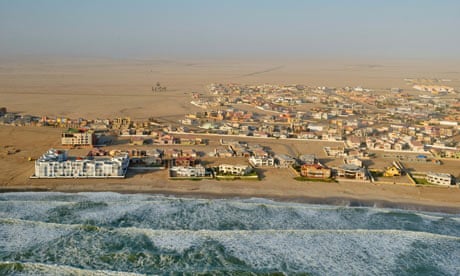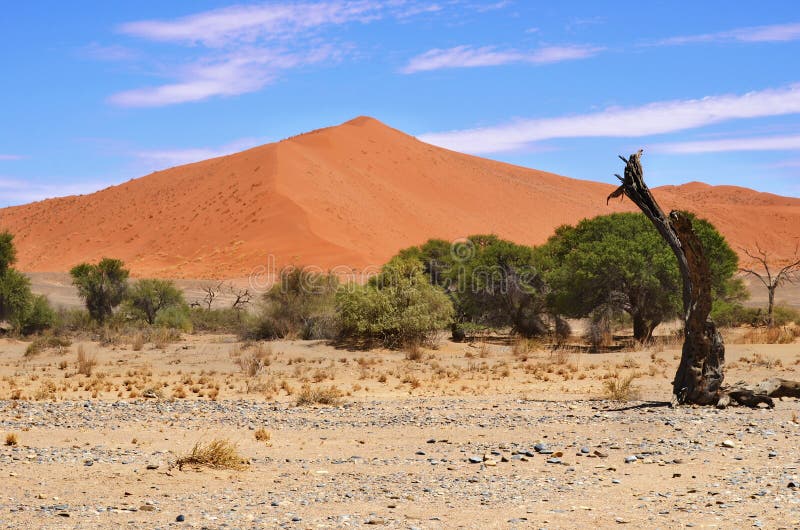Namibia's Stark Beauty: A Sustainable Adventure on the Skeleton Coast and Beyond

Landing in Namibia felt like stepping onto another planet. The dry heat hit me immediately, a stark contrast to the cool coastal air I'd left behind. But more than the temperature, it was the vastness that struck me. Endless horizons stretched out in every direction, a tapestry woven from ochre sands and rocky outcrops. This was Namibia, a land of dramatic landscapes and resilient ecosystems, and I was buzzing with anticipation to explore it all through the lens of sustainable travel. I'm Anya Sharma, and I'm committed to seeking out destinations where adventure and conservation intertwine. Namibia, with its pioneering efforts in community-based tourism and environmental protection, seemed like the perfect place to start.
Fish River Canyon Hike: A Descent into Ancient History
My Namibian adventure kicked off with a multi-day guided hike through the awe-inspiring Fish River Canyon, the second largest canyon in the world. The terrain was challenging, a relentless mix of rocky paths and steep inclines that tested my endurance. But the rewards were immeasurable. The sheer scale of the canyon was breathtaking, and the views, especially at sunrise and sunset, were simply unforgettable.
I was fortunate to have Joseph, a local Nama man, as my guide. His knowledge of the canyon's history, geology, and ecology was invaluable, and his passion for his homeland was infectious. We shared stories around the campfire each night, learning from each other and forging a bond that transcended language and culture. It was a true example of sustainable tourism at its finest!
This hike put my gear to the ultimate test. My Scarpa Zodiac Plus GTX hiking boots proved to be indispensable. Their exceptional ankle support and aggressive tread provided the stability and grip I needed to navigate the rocky terrain with confidence. Even after miles of relentless pounding, my feet remained comfortable and blister-free. A true investment for serious hikers. My Sawyer Squeeze water filter was another lifesaver. Access to potable water was limited, but with the Sawyer, I could safely filter water from the Fish River and its tributaries, ensuring I stayed hydrated throughout the trek. It's lightweight, easy to use, and a must-have for any off-grid adventure. Finally, my Osprey Archeon 65 backpack carried all my essentials with ease. Its comfortable suspension system distributed the weight evenly, and the durable recycled materials held up remarkably well against the harsh environment. It's a fantastic pack for those seeking both performance and sustainability.
Throughout the tour, Joseph emphasized the importance of Leave No Trace principles. We packed out everything we packed in, stayed on established trails, and minimized our impact on the delicate ecosystem. It was inspiring to see how seriously he and his community took their role as stewards of this incredible natural wonder.
Sossusvlei Hot Air Balloon Ride: Painting the Desert Sky
The pre-dawn wake-up call was brutal, but the promise of witnessing Sossusvlei from above fueled my motivation. As the hot air balloon slowly inflated, a sense of anticipation filled the air. Soon, we were gently lifting off the ground, ascending into the inky blackness. Then, as the first rays of sunlight kissed the towering dunes, the landscape exploded into a symphony of color.
The view was simply breathtaking. The iconic dunes of Sossusvlei, sculpted by millennia of wind and sand, stretched out beneath us like a surreal painting. The play of light and shadow created a mesmerizing spectacle, highlighting the contours and textures of the landscape. And then there was Deadvlei, a ghostly forest of ancient camel thorn trees standing in stark contrast to the white clay pan and the surrounding orange dunes. It was an otherworldly scene that will forever be etched in my memory.

I was initially concerned about the environmental impact of a hot air balloon ride. However, the tour operator I chose was committed to minimizing their footprint. They used carbon offsetting programs to neutralize their emissions and employed quieter burners to reduce noise pollution, ensuring minimal disturbance to the wildlife below. It's crucial to research and choose operators who prioritize environmental responsibility.
Sandwich Harbour Kayaking Tour: Where the Desert Meets the Ocean
Another highlight of my Namibian adventure was a kayaking tour through the Sandwich Harbour lagoon, a unique ecosystem where the towering dunes of the Namib Desert meet the crashing waves of the Atlantic Ocean. This pristine environment teems with life, and I was fortunate enough to witness it firsthand.
As I paddled through the calm waters, playful seals darted around my kayak, their curious eyes peering up at me. Flocks of flamingos waded gracefully in the shallows, their vibrant pink plumage a stunning contrast to the surrounding landscape. A myriad of other bird species filled the air with their calls, creating a symphony of nature.
Witnessing this incredible biodiversity was a powerful reminder of the importance of responsible wildlife viewing. Our guide emphasized the need to maintain a safe distance from the animals and avoid any actions that could disturb their natural behavior. It's our responsibility to protect these fragile ecosystems and ensure they thrive for generations to come.
Culinary Experiences at Kulala Desert Lodge: A Taste of Namibia
My culinary journey in Namibia reached its peak at Kulala Desert Lodge, a luxurious oasis nestled near Sossusvlei. The lodge's commitment to sustainability was evident in every aspect of its operation, from its eco-friendly design to its support for local communities.
The dining experience was a celebration of Namibian flavors. I savored tender Oryx steak, grilled to perfection and infused with the subtle smokiness of the desert wood. The Springbok carpaccio, thinly sliced and drizzled with olive oil and herbs, was a delightful explosion of taste and texture. And of course, no Namibian meal is complete without a glass of South African wine. I particularly enjoyed the Pinotage wines from the Stellenbosch region, known for their rich, fruity notes and earthy undertones. The lodge even arranged a wine tasting, where I learned about the history and characteristics of this unique varietal.
Kulala Desert Lodge sources its ingredients from local farmers, supporting the local economy and reducing its carbon footprint. It's a shining example of how luxury and sustainability can go hand in hand.
Challenges & Rewards: Embracing the Desert's Embrace
Traveling in Namibia is not without its challenges. The extreme temperatures can be demanding, the distances vast, and resources limited. One afternoon, while exploring the dunes near Sossusvlei, I was caught in a sudden sandstorm. The wind howled, the sand stung my skin, and visibility was reduced to near zero. It was a moment of genuine discomfort, but I took shelter behind a dune and waited it out, reminding myself of the resilience of the desert ecosystem.
And that's precisely what makes the experience so rewarding. Overcoming these challenges fosters a profound connection with nature, a deep appreciation for the stark beauty of the landscape, and a sense of accomplishment that is hard to replicate elsewhere.
Sustainability & Community: A Shared Responsibility
Sustainable tourism is not just a buzzword in Namibia; it's a way of life. From the community-owned conservancies that protect wildlife to the eco-lodges that minimize their environmental impact, Namibia is leading the way in responsible tourism practices.
I had the opportunity to speak with a local artisan in a small village near Sesriem, who told me how tourism had provided her with a sustainable source of income, allowing her to support her family and preserve her cultural heritage. It was a powerful reminder of the positive impact that tourism can have when it's done right.
Conclusion: A Transformative Journey
My journey through Namibia was more than just a vacation; it was a transformative experience. I witnessed the raw beauty of the desert landscape, encountered incredible wildlife, and connected with the warm and welcoming people of Namibia. I left with a deep appreciation for the importance of sustainable tourism and a renewed commitment to protecting our planet.
I encourage you to visit Namibia and experience its stark beauty for yourself. But please, travel responsibly. Support locally owned businesses, minimize your waste, and respect the environment. Together, we can ensure that Namibia's unique ecosystems thrive for generations to come. Consider donating to a Namibian conservation organization or choosing eco-friendly tour operators for your adventure.
Gear List:
- Scarpa Zodiac Plus GTX Hiking Boots: [Insert Link to Purchase]
- Osprey Archeon 65 Backpack: [Insert Link to Purchase]
- Sawyer Squeeze Water Filter: [Insert Link to Purchase]
- Wide-Brimmed Sun Hat (Made from Organic Cotton): [Insert Link to Similar Product]
- Thinksport SPF 50+ Reef-Safe Sunscreen: [Insert Link to Purchase]